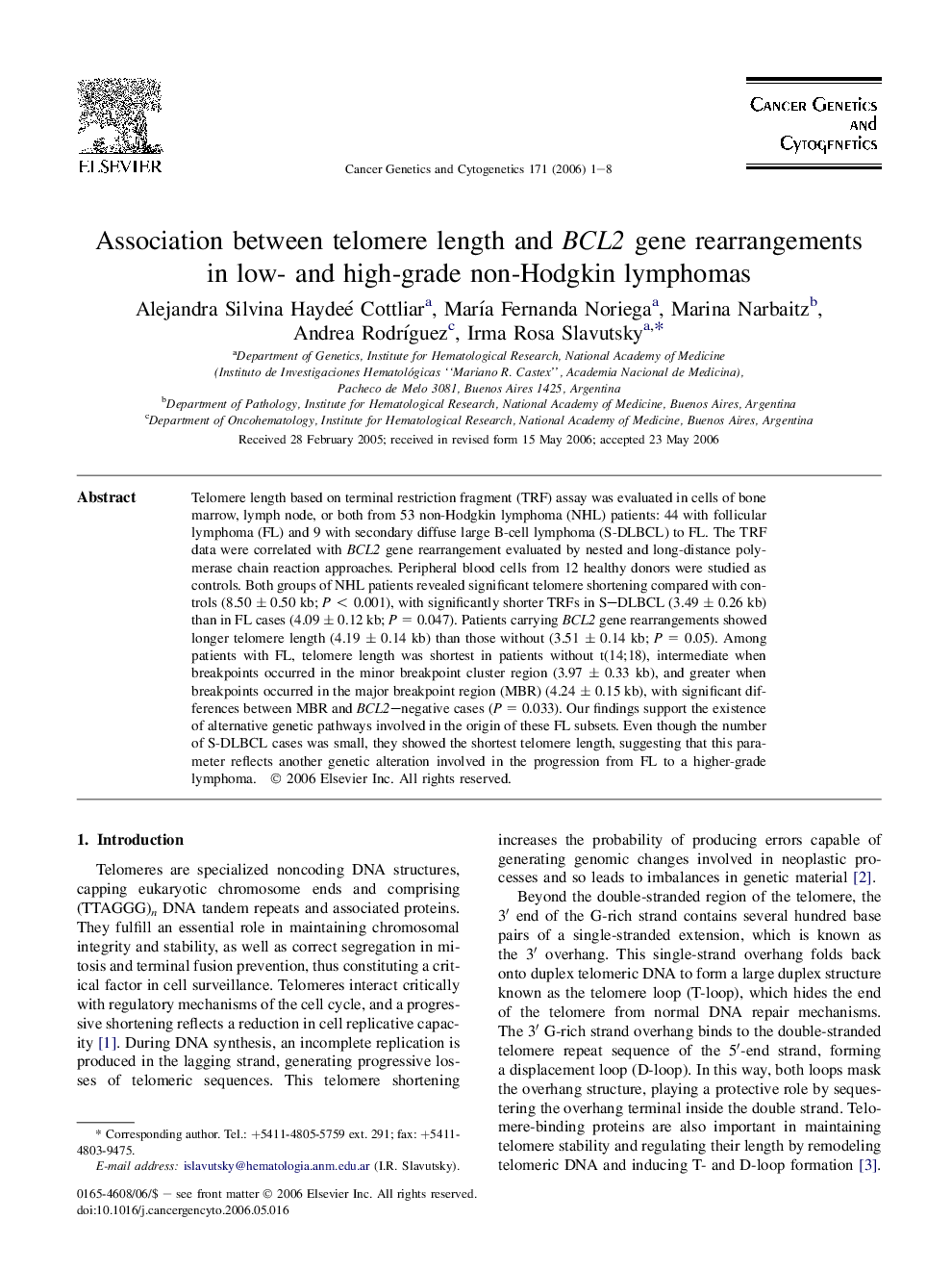| Article ID | Journal | Published Year | Pages | File Type |
|---|---|---|---|---|
| 2111811 | Cancer Genetics and Cytogenetics | 2006 | 8 Pages |
Abstract
Telomere length based on terminal restriction fragment (TRF) assay was evaluated in cells of bone marrow, lymph node, or both from 53 non-Hodgkin lymphoma (NHL) patients: 44 with follicular lymphoma (FL) and 9 with secondary diffuse large B-cell lymphoma (S-DLBCL) to FL. The TRF data were correlated with BCL2 gene rearrangement evaluated by nested and long-distance polymerase chain reaction approaches. Peripheral blood cells from 12 healthy donors were studied as controls. Both groups of NHL patients revealed significant telomere shortening compared with controls (8.50 ± 0.50 kb; P < 0.001), with significantly shorter TRFs in S-DLBCL (3.49 ± 0.26 kb) than in FL cases (4.09 ± 0.12 kb; P = 0.047). Patients carrying BCL2 gene rearrangements showed longer telomere length (4.19 ± 0.14 kb) than those without (3.51 ± 0.14 kb; P = 0.05). Among patients with FL, telomere length was shortest in patients without t(14;18), intermediate when breakpoints occurred in the minor breakpoint cluster region (3.97 ± 0.33 kb), and greater when breakpoints occurred in the major breakpoint region (MBR) (4.24 ± 0.15 kb), with significant differences between MBR and BCL2-negative cases (P = 0.033). Our findings support the existence of alternative genetic pathways involved in the origin of these FL subsets. Even though the number of S-DLBCL cases was small, they showed the shortest telomere length, suggesting that this parameter reflects another genetic alteration involved in the progression from FL to a higher-grade lymphoma.
Related Topics
Life Sciences
Biochemistry, Genetics and Molecular Biology
Cancer Research
Authors
Alejandra Silvina Haydeé Cottliar, MarÃa Fernanda Noriega, Marina Narbaitz, Andrea RodrÃguez, Irma Rosa Slavutsky,
